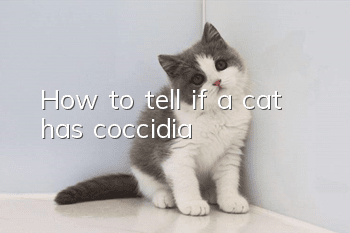How to tell if a cat has coccidia

Cat coccidiosis is a relatively common parasitic disease. Isospora parasitizes the epithelial cells of the mucosa of the small intestine and large intestine of cats. The main clinical manifestations are loss of appetite, depression, and loose and soft excretion mixed with blood and mucus. feces, lose weight quickly, have pale mucous membranes, and some may experience symptoms such as vomiting.
How to tell if a cat has coccidia
Cat coccidiosis is a relatively common parasitic disease. Isospora parasitizes the epithelial cells of the mucosa of the small intestine and large intestine of cats. The main clinical manifestations are loss of appetite, depression, and loose and soft excretion mixed with blood and mucus. The feces, weight loss quickly, pale mucous membranes, and some symptoms such as vomiting. Kittens have poor resistance and often die due to extreme exhaustion. Adult cats generally have a chronic process. Regardless of whether it is a big cat or a kitten, if any symptoms occur, seek medical attention promptly.
Feline coccidiosis is common in free-range cats. If the cat is free-range, the cat is likely to be infected by eating animals with coccidiosis. For example, rabbits, mice, or chickens may carry coccidiosis, and cats may be infected with coccidiosis when they eat these animals.
A cat infected with coccidia cannot be seen with the naked eye. It can only be seen through careful examination under a microscope. If the cat shows symptoms of soft stools and diarrhea, it is best to do a fecal examination first; generally young cats are easily infected with coccidia. Timely detection and treatment will not affect the cat's life. If it is delayed for a long time, it may cause dehydration, bleeding, hypoglycemia, shock, etc.
- Why do cats like to eat fish? In fact, we have all misunderstood...
- What breed is Cheese Cat? Popular science about cheese cat breeds!
- Can I bathe my cat before vaccinating it?
- Can Golden Gradient Cats Bite?
- When you see a cat on the street, how do you greet it and get a response?
- Does a cat with a big belly necessarily mean ascites?
- Can adult cats eat cooked eggs?
- Can cats eat the roots of broccoli?
- Can cats take deworming medicine after giving birth?
- How to treat ringworm on cat toes?



